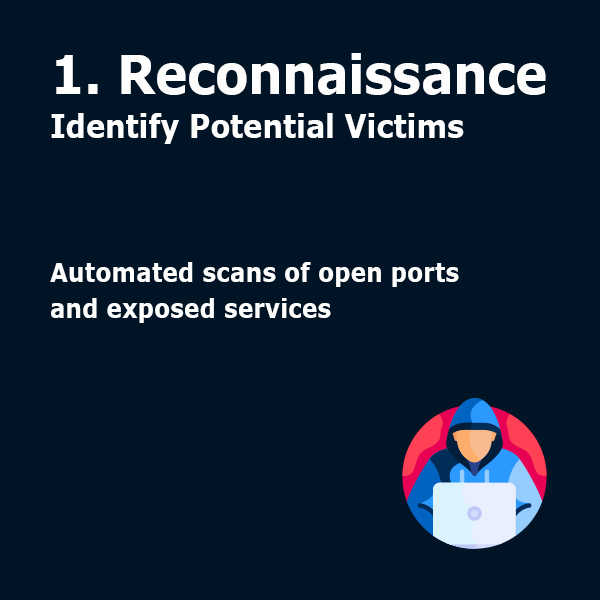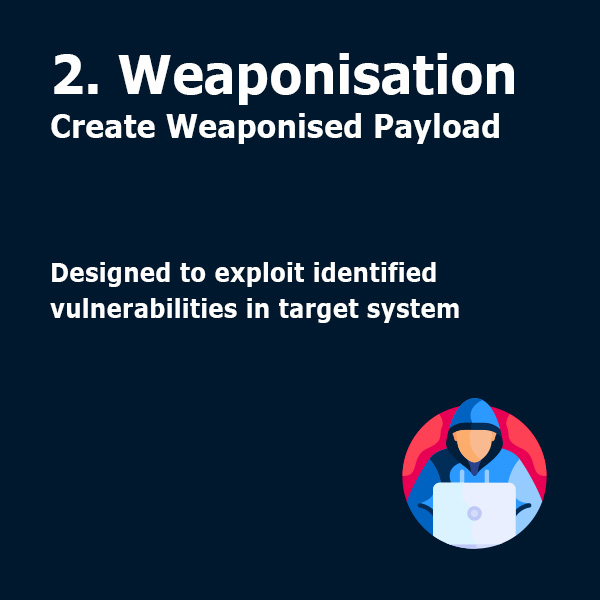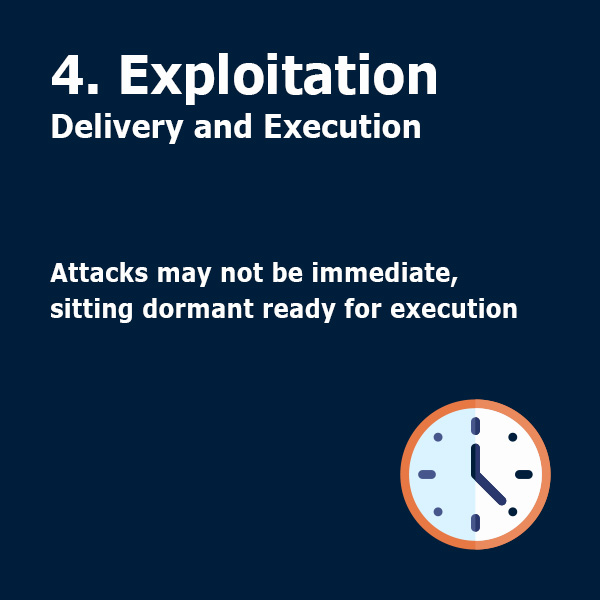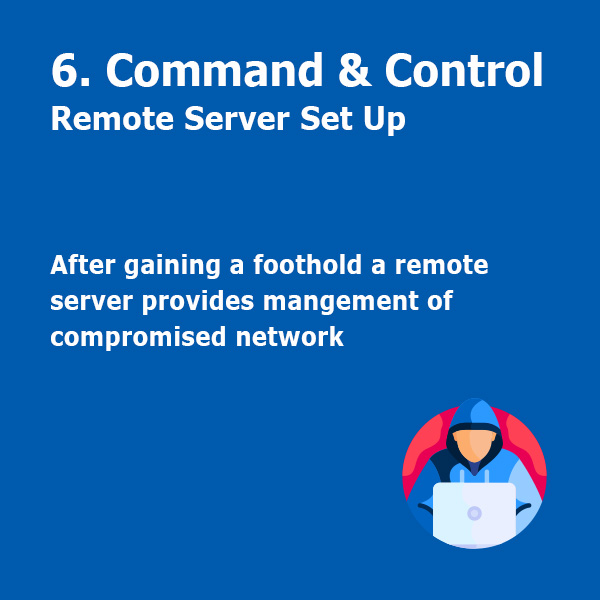A cyber-attack may come in many forms, but they all share a common goal: to gain unauthorised access to sensitive information or disrupt the normal operations of a computer system or network. To better understand the anatomy of a cyberattack, let's break it down into different stages.
1. Reconnaissance
This is the initial stage where the attacker gathers information about their target. They may use various techniques such as scanning for vulnerabilities, social engineering tactics, phishing attacks or searching for publicly available information of sensitive data.
Often public information from commonly used websites will lead to some kind of cyber attack. Up to 88% of UK businesses have suffered a cyber attack of some kind.
2. Weaponisation
After gathering enough information, the attacker will then create a weaponised payload to exploit any identified vulnerabilities in the target system. This could be in the form of malware, viruses, or other malicious code.
3. Delivery
The attacker will then find a way to deliver their weaponised payload to the target system. This could be through a phishing email, social engineering tactics, or exploiting unsecured connections.
4. Exploitation
Once the payload is delivered and executed on the target system, the attacker can now exploit any identified vulnerabilities to gain access and control over the system.
Execution may not happen immediately. For instance, consider a recent case where we advised and assisted a client in dealing with a ransomware demand. During this incident, the malicious payload remained dormant on their system for a number of weeks, waiting for the organisation to publish its financial reports. This allowed the hackers to determine the appropriate amount to demand.
-
 Step 1
Step 1 -
 Step 2
Step 2 -
 Step 3
Step 3 -
 Step 4
Step 4 -
 Step 5
Step 5 -
 Step 6
Step 6 -
 Step 7
Step 7 -
 Step 8
Step 8
5. Installation
In this stage, the attacker will establish a foothold in the compromised system by installing malware infections or backdoors, in addition to the ones they already have, for future access and potentially future attacks.
Attackers often avoid detection by setting up admin user names that follow existing naming protocols thereby covering tracks and avoiding detection.
6. Command and Control
After gaining a foothold in the system, attackers will set up a command and control server to remotely control and manage their actions within the compromised network.
7. Actions on Objective
The final stage of a cyberattack involves weaponisation of their malicious software and achieving the desired goal of accessing sensitive corporate or personal information, data breaches, disrupting services, or causing financial damage.
After biding their time to strike, attackers will exploit the weakness and create the most havoc in a very short space of time, often disabling complete networks, software and connected devices within hours. This allows them to seek financial payouts to resolve, often adding a sense of urgency to their demands before publicising their attack.
8. Defence and Mitigation
In order to mitigate against attacks it is crucial to have strategies and plans to execute in the event of a cyber breach. But often organisations do not, resulting in delays in decision making, increasing effectiveness of the attack.
When remediation against an attack is done on the fly, because a plan is not in place, it can be more costly in terms of time (taking days and hours to contain an attack rather than moments).
It is vitally important for organisations to have proper security measures in place such as firewalls, intrusion detection systems, and regular vulnerability assessments.
Conclusion
Cyberattacks are a constant threat in today's digital landscape. It is crucial for individuals and organisations to understand the different stages of a cyberattack in order to better protect themselves from potential threats.
Often organisations have the tools already in their portfolio of software to prevent cyber attacks but have not executed them properly across the organisation. They also overlook the importance of putting monitoring and reporting systems in place, leading to vulnerabilities.
By implementing strong security measures and staying informed about current cybersecurity trends, organisations can do better to protect themselves from attack but often leave it until it is too late.
With cyber insurance now available to protect them from the consequences of an attack, some organisations may feel they do not need to concern themselves too much with preparation for an attack. However, most insurance companies require strategies and minimum standards to be in place to mitigate attacks.
If you’d like to talk to one of our cyber security team about an audit for your systems and networks, to improve your preparedness for a cyber attack, get in touch today.

